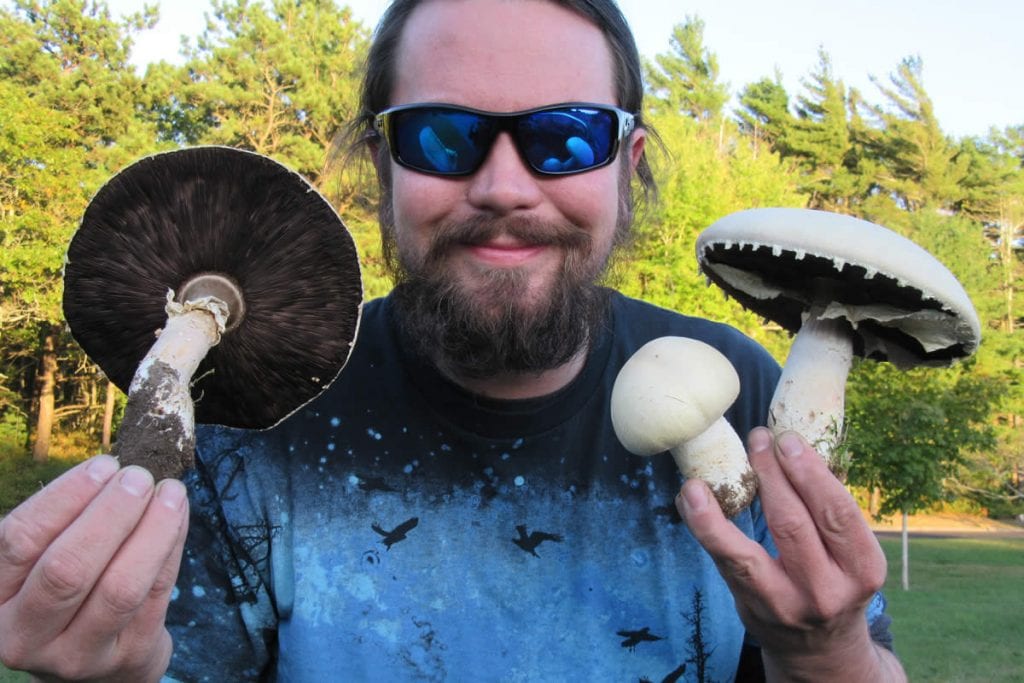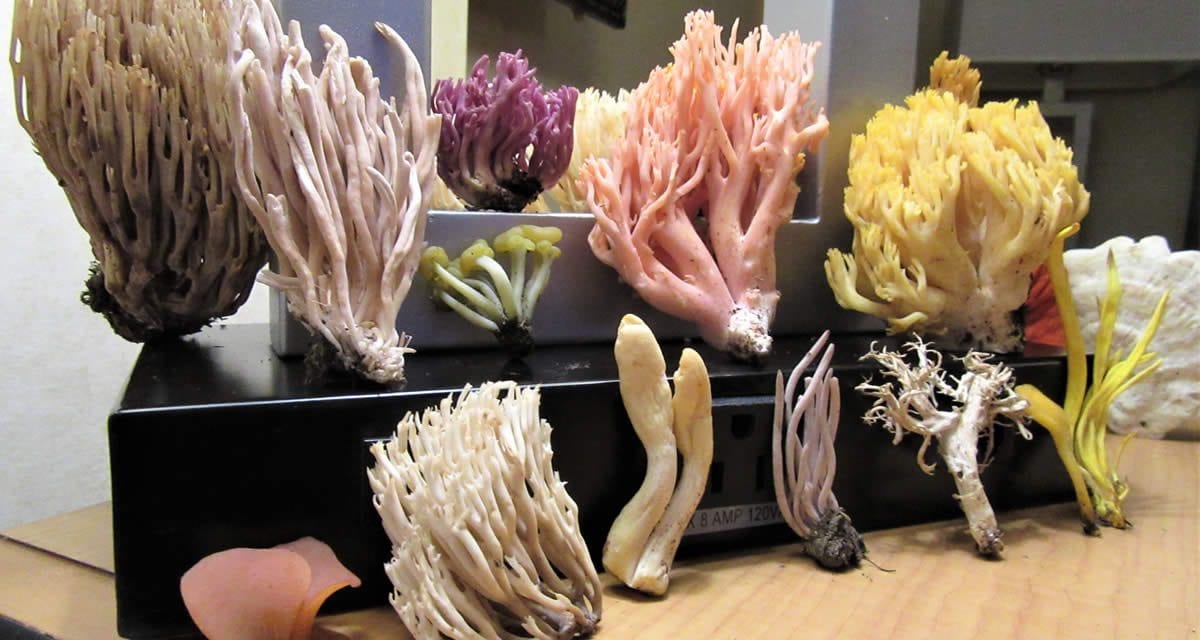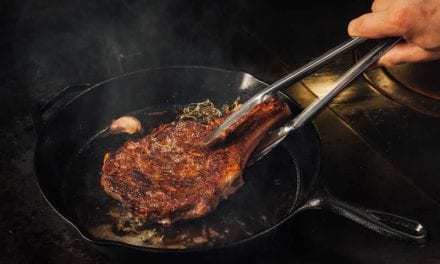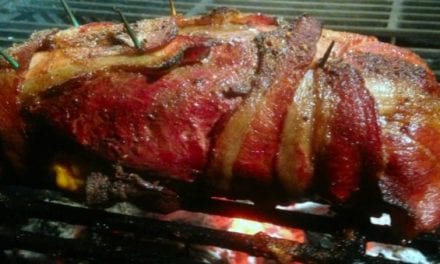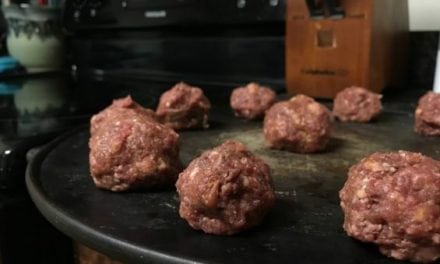By Ryan T Bouchard, The Mushroom Hunting Foundation.
Following the path along the bank of a stream, I slowed down to cross another small brook. Glancing sideways up its stony course, I suddenly came to a complete stop. The brook, bordered with pale green sphagnum moss, was coming down through a little ravine full of beech trees. This was a textbook Black Trumpet spot, an area where it would actually be worth my time to scan the forest floor for those camouflaged little devils. I saw just what I had hoped to see: dark grey trumpet-shaped mushrooms. In this patch they weren’t camouflaged at all, they were growing right up out of the moss, the colors contrasting perfectly and I could see the mushrooms continuing further up into the ravine along the banks of the brook.
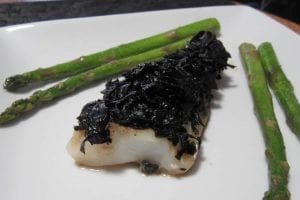 The soft light coming through the beech leaves was making this an easy task. Soon I had collected a nice big bag of them. I placed it carefully in my backpack and continued back to the stream, imagining the smell of this collection as it sizzles in a frying pan and dreaming of fish smothered in smoky-flavored Black Trumpets.
The soft light coming through the beech leaves was making this an easy task. Soon I had collected a nice big bag of them. I placed it carefully in my backpack and continued back to the stream, imagining the smell of this collection as it sizzles in a frying pan and dreaming of fish smothered in smoky-flavored Black Trumpets.
Passing a fisherman on the trail, I wondered if he had tried Black Trumpets before or if he had even heard of them. They say that America is one of the countries that fears wild mushrooms. But here in the twenty-first century, the science is up to date. Sure, poisonous mushrooms are out there and yes, some of them can indeed kill you but American mycology has advanced to the point where a person can safely enjoy eating many great edibles. It’s no longer a game of Russian roulette. There are even a number of delicious mushroom species that anyone can easily identify without having to become an expert first, even beginner-level mushroom hunting is incredibly enjoyable.
Mycology, the study of fungi, has also shown that they play crucially important roles in the web of life. Unfortunately, our general public remains unaware of the most basic, fundamental facts of mycology and as our lack of awareness continues, so does our “fear of fungi.” Signs of it can even be seen at the supermarket. Portobellos, Baby Bellas, Brown Buttons (Cremini), White Button…this usual selection doesn’t impress me because I know all those varieties are just different forms of Agaricus bisporus. That’s right; those are all the same species of mushroom! Grown under different lighting conditions or harvested at different stages of growth, they are all the same species, truly. That’s why they all have the same flavor. The mushroom farming industry chose just one easily cultivated species to focus on and they have stuck with it, churning out several varieties that look quite different from each other, it follows that Americans tend to believe all mushrooms taste the same. To an experienced mushroom hunter this is laughable, like thinking that all plants or all kinds of meat have the same flavor. Sure, the grocery species is a delicious one but wild mushrooms have more to offer. Trust me, you can’t imagine them.
 As the mushroom seasons change throughout the year, I can barely wait to taste their amazing flavors again. The scrumptious meat of the Pheasant Polypore in early Spring, the pistachio-flavored Bicolor Bolete in June, the steak-like Corrugated Milk Mushrooms in summer, the giant, savory Hen of the Woods in the fall, the delicious mustiness of the Matsutake in November, big clustered Oyster mushrooms in early December, ahh but see, now I’ve made each sound like seasons offer only one kind of mushroom. In truth, there are a great many. With Emily, my girlfriend and partner, I have eaten over 230 different mushroom species. We pride ourselves in knowing which ones have the best flavors and textures. Savory, sweet, sour, smoky, spicy, firm, delicate, gummy, crunchy, chewy; their diversity is astonishing.
As the mushroom seasons change throughout the year, I can barely wait to taste their amazing flavors again. The scrumptious meat of the Pheasant Polypore in early Spring, the pistachio-flavored Bicolor Bolete in June, the steak-like Corrugated Milk Mushrooms in summer, the giant, savory Hen of the Woods in the fall, the delicious mustiness of the Matsutake in November, big clustered Oyster mushrooms in early December, ahh but see, now I’ve made each sound like seasons offer only one kind of mushroom. In truth, there are a great many. With Emily, my girlfriend and partner, I have eaten over 230 different mushroom species. We pride ourselves in knowing which ones have the best flavors and textures. Savory, sweet, sour, smoky, spicy, firm, delicate, gummy, crunchy, chewy; their diversity is astonishing.
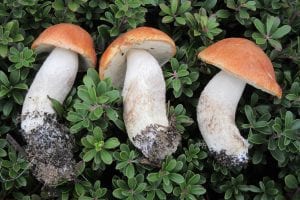 We also pride ourselves in teaching people how to do this safely. A Parasol mushroom is delicious but I wouldn’t rush to throw one in the frying pan. Recognizing an expert-level mushroom like that, without any chance of mistaking it for a poisonous look-alike species, will take a lot of knowledge and firsthand experience. Luckily there are also beginner level mushrooms, ones that don’t resemble anything poisonous. You can easily learn to recognize them and identify them correctly.
We also pride ourselves in teaching people how to do this safely. A Parasol mushroom is delicious but I wouldn’t rush to throw one in the frying pan. Recognizing an expert-level mushroom like that, without any chance of mistaking it for a poisonous look-alike species, will take a lot of knowledge and firsthand experience. Luckily there are also beginner level mushrooms, ones that don’t resemble anything poisonous. You can easily learn to recognize them and identify them correctly.
It’s especially easy if you have my new book, Gourmet Mushrooms of the Northeast 2019 which, under the same cover, combines both a calendar of the changing mushroom seasons and a complete book on the rules of safe mushroom hunting and cooking. By the way, that’s one of the rules: wild mushrooms always need to be cooked.
While promoting my new book to various hunting and fishing shops, I’ve received mixed results. Some shop owners see my nature photography and hear me mention the science of mycology, which makes this hobby safe, and they turn away from the idea, sensing some imagined political barrier. I think they assume I’m actually opposed to outdoor sportsmen and I find this incredibly sad because I think most of us are ultimately on the same page. None of us wants the wildlife we eat to be loaded with carcinogenic industrial chemicals not do we want the American wilderness to be carelessly paved over. The actual enjoyment and use of forest land drives us to preserve as much of it as possible. I feel especially glad when I can actually make that connection; when the shop owner sees one of my photographs and says, “I’ve seen those mushrooms in the woods, you’re really saying you can cook those and eat them?” The answer is, “Yes, and they are great with venison.” I know I’m in the right place. Hunters and fishermen are frequently in a position to come home with the best edible wild mushroom collections on the planet.
